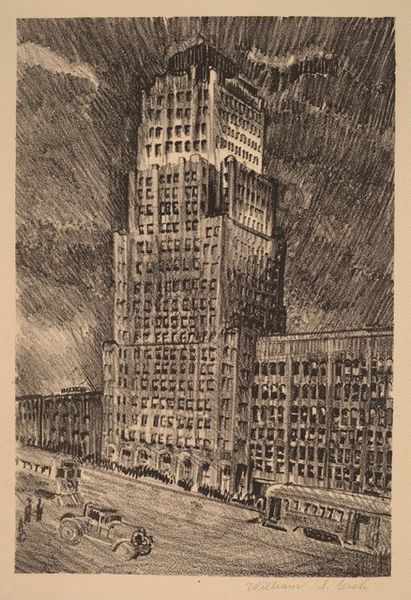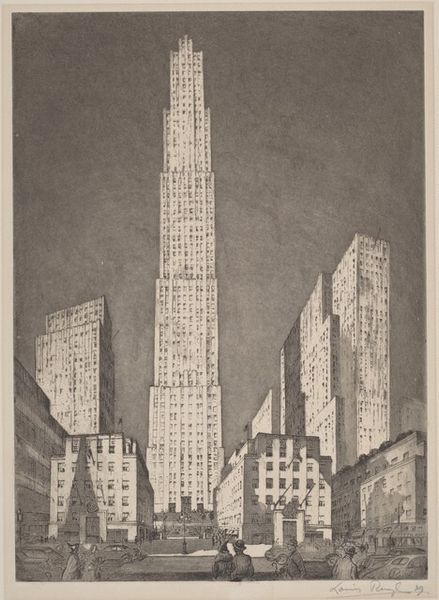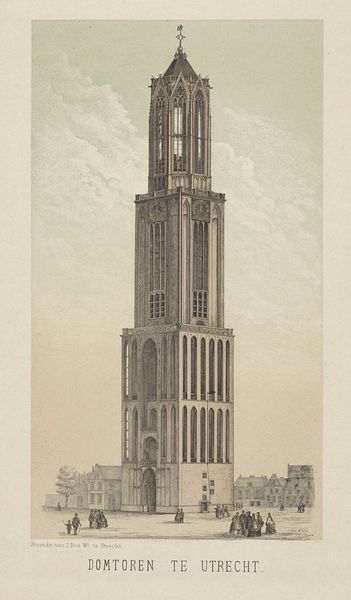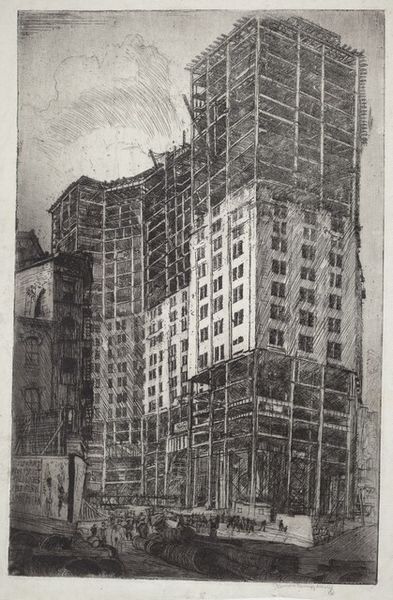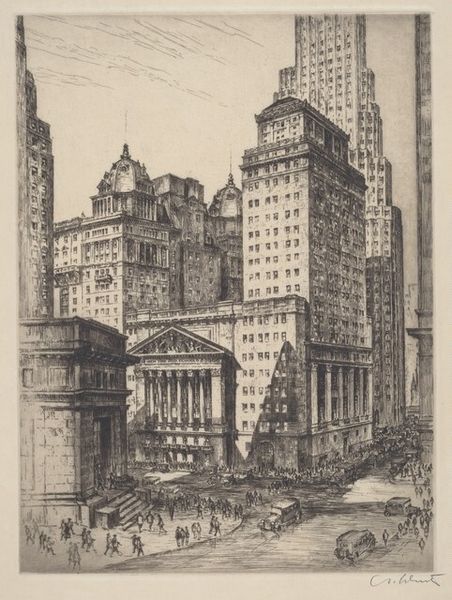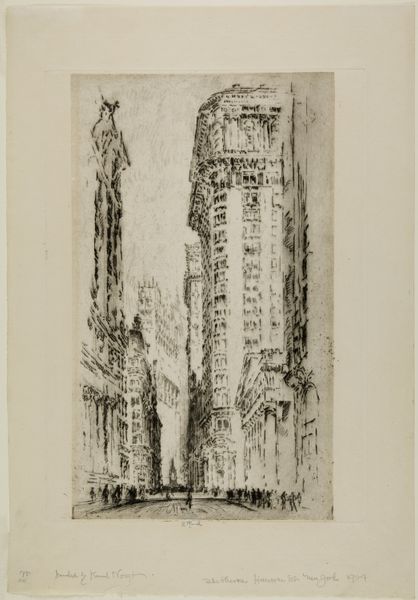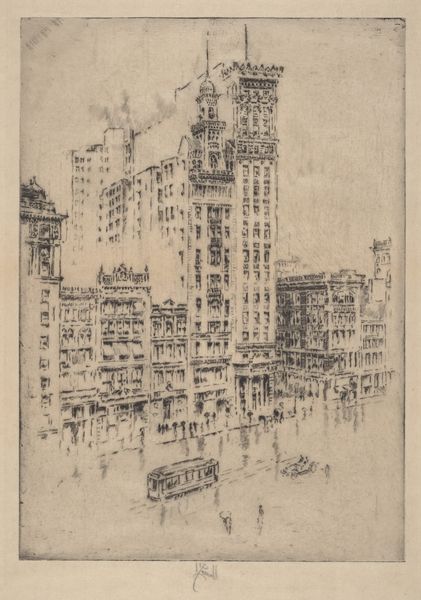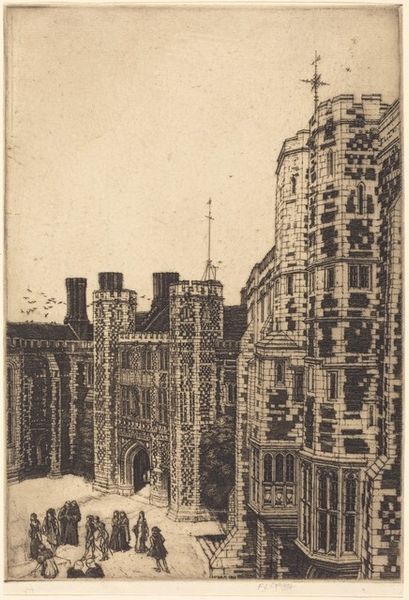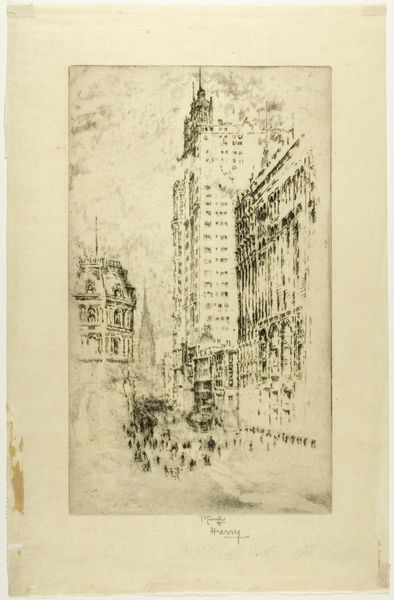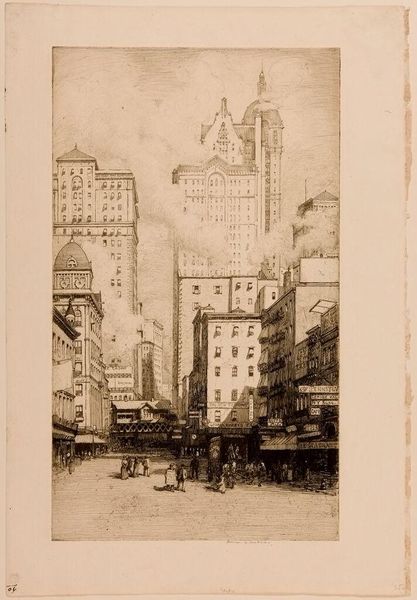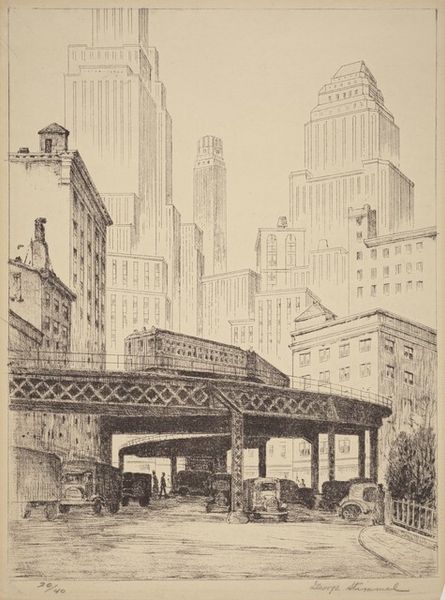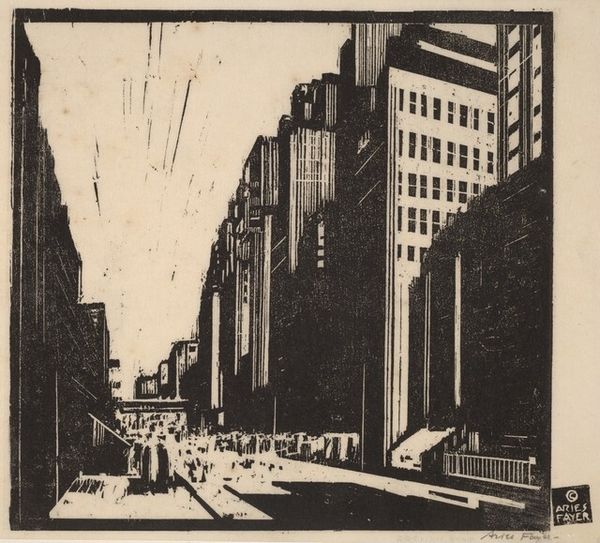
drawing, print, etching
precisionism
drawing
etching
cityscape
modernism
Dimensions: plate: 17.8 x 12.7 cm (7 x 5 in.) sheet: 30.5 x 24 cm (12 x 9 7/16 in.)
Copyright: National Gallery of Art: CC0 1.0
Editor: This is Walter Pach's "Tower" from 1924, an etching printed on paper. I'm struck by how the building seems to dominate the city around it. What was the social context in which Pach created this piece? Curator: It's essential to consider this work within the booming 1920s. This was a period of intense urbanization and industrial expansion in America. Buildings like this became potent symbols of American power and progress, and Pach was deeply involved in promoting modern art, also European art, so you can think of how his understanding of European modernist art could come to bear on his urban landscapes. But what does the starkness of the lines suggest to you, given this context? Editor: Maybe a sort of ambivalence? Like, this impressive symbol of progress is also imposing, even alienating. Did viewers at the time respond similarly? Curator: The reception was certainly mixed. On one hand, there was the celebration of modernity and American ingenuity. Yet, others criticized the dehumanizing aspects of industrial life. There was much anxiety around modernity, reflected in Pach's sharp style and the way he depicts the urban landscape. The museum played an interesting role as a filter: exhibiting similar, modern, monumental cityscapes both celebrated and legitimized the urban project. Editor: That's a good point. It makes me think about the power dynamics inherent in these structures, both physical and institutional. Curator: Precisely. Museums didn't simply display art; they shaped the narrative around it, influencing public perception. Does it shift your initial reading of the artwork at all? Editor: Yes, absolutely. Now I see "Tower" as part of a larger cultural conversation, almost a negotiation, between celebrating and critiquing the rise of the modern city. Thanks. Curator: And seeing it within the power dynamics shifts the visual appeal into something far more substantive.
Comments
No comments
Be the first to comment and join the conversation on the ultimate creative platform.
